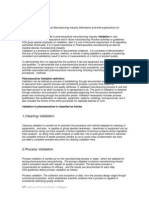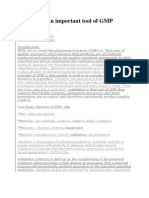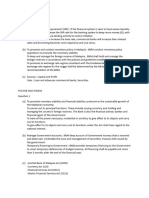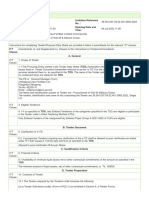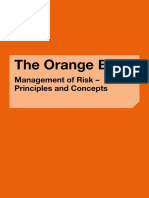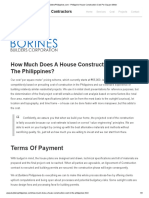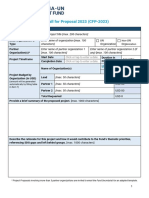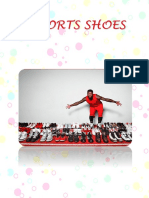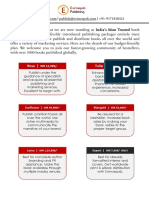💊 VALIDATION IN
PharmaMindsHub
PHARMACEUTICAL
INDUSTRY
�TABLE
OF CONTENT
What is Validation?
Why is Validation Important in Pharma?
Types of Validation
Key Areas of Validation in Pharma
Validation Master Plan (VMP)
The Validation Lifecycle
Regulatory Guidelines for Validation
Common Documents in Validation
Real-Life Example: Tablet Manufacturing Process Validation
Benefits of Validation
Summary: Why Validation is a Backbone of Pharma Industry
WHAT IS VALIDATION?
What is Validation?
Validation is a documented process that provides a high degree of
assurance that a specific system, process, equipment, or method
consistently produces a result meeting pre-determined acceptance
criteria.
Definition (as per WHO & FDA):
Validation is “Establishing documented evidence which provides a high
degree of assurance that a specific process will consistently produce a
product meeting its predetermined specifications and quality
attributes.”
In simple terms:
Validation = Written Proof that our process works properly and gives
the expected result — every time.
A. K. PATEL
01
�WHY IS
VALIDATION
IMPORTANT IN
PHARMA?
1. ✔️ To ensure product
quality, efficacy, and safety
2. ✔️ To meet regulatory
compliance (USFDA, WHO, EU
GMP, etc.)
3. ✔️ To reduce product
recalls and batch failures
4.✔️ To increase patient trust
and market credibility
5.✔️ To build robust systems
that minimize human error
✔️TYPES OF VALIDATION
1. Prospective Validation
• Performed before a new product or process is
commercialized.
• Done during R&D or initial manufacturing runs.
• Example: Validating a new tablet compression machine
before regular use.
2. Concurrent Validation
• Carried out during routine production.
• Data from current batches is used to validate the process.
• Common when time is limited before product launch.
A. K. PATEL
02
� 3. Retrospective Validation
• Based on historical data from
previous batches.
• Rare today; used when processes
have been stable for years.
• Regulatory bodies now prefer
prospective and concurrent
methods.
4. Revalidation
• Done when:
o Significant changes are made to
equipment, formulation, or process.
o After a deviation, equipment
overhaul, or long shutdown.
KEY AREAS OF
VALIDATION IN
PHARMA
1. Process Validation
✅ Includes:
• Objectives and strategy
• Validation schedule
• Roles and responsibilities
• Equipment & systems to be validated
• Documentation flow
A. K. PATEL
03
�KEY AREAS OF VALIDATION IN
PHARMA
1. Process Validation
4. Analytical Method
• Proves that manufacturing
processes yield consistent quality. Validation
• Example: Mixing time, granulation
• Ensures lab testing
speed, drying temperature,
methods are accurate,
compression force.
reproducible, and reliable.
2. Cleaning Validation • Key parameters:
• Ensures equipment is cleaned Specificity, Linearity,
properly and no cross- Accuracy, Precision,
contamination occurs. Robustness, LOD/LOQ.
• Includes swab testing and rinse
sampling.
5. Computer System Validation
• Critical in multi-product facilities.
(CSV)
3. Equipment Qualification
A four-step process often written as
• Validates software
DQ – IQ – OQ – PQ:
systems like LIMS, SCADA,
a. Design Qualification (DQ) PLCs, ERP, etc.
• Ensures equipment design meets • Ensures data integrity, 21
required specs. CFR Part 11 compliance,
b. Installation Qualification (IQ) and traceability.
• Verifies correct installation as per
manufacturer’s guidelines.
c. Operational Qualification (OQ)
• Checks that the equipment works
under defined operating ranges.
d. Performance Qualification (PQ)
• Proves equipment consistently
performs in real production
conditions.
A. K. PATEL
04
� Validation Master
Plan (VMP)
This is the blueprint of all
validation activities.
✅ Includes:
• Objectives and strategy
• Validation schedule
• Roles and responsibilities
• Equipment & systems to
be validated
• Documentation flow
TYPICAL VALIDATION LIFECYCLE
🟦 User Requirement Specification 🟦 Risk Assessment
(URS) • Identify potential risks to
• Define exactly what is product quality and
patient safety.
required from equipment,
• Helps focus validation efforts on
process, or system.
📝 Example: “The granulator
critical control
points.
must handle 50–100 🛑 Example: If a fluid bed dryer
kg batch size and allow overheats, it can
temperature control.” degrade API — this is a high-risk
🟦 Validation Master Plan (VMP) area needing
• High-level document strict validation.
outlining all validation
🟦 Protocol Preparation
• Develop specific validation
activities in the facility.
protocols for
• Includes:
equipment, processes, cleaning,
o Scope etc.
o Responsibilities • Every protocol includes:
o Timeline o Objectives
o Systems/Processes to o Acceptance criteria
validate o Sampling plan
o Acceptance criteria o Data recording method
o Responsible personnel
A. K. PATEL
05
�🟦 Execution of Validation
• Perform validation trials (e.g., 3
consecutive batches).
• Document all results in real time.
• Record any deviations and perform
root
cause analysis.
Example: If one tablet batch fails
disintegration test, it must be
investigated
before approval.
🟦 Validation Report
• Summarizes the execution and
results.
• Confirms if acceptance criteria were
met.
• Includes:
o Data analysis
o Graphs
o Tables
o Conclusions
✅ If all criteria are met →
Validated
❌ If not met →Investigate and Re-
validate
REGULATORY GUIDELINES FOR VALIDATION
Validation is governed by various global guidelines:
Authority Guidelines
US FDA 21 CFR Part 11, Process Validation Guidance
WHO Annex 4 of TRS 1019
EU EMA Annex 15 (Qualification & Validation)
ICH ICH Q2(R1) for Analytical Validation
PIC/S Guide to GMP for Medicinal Products
COMMON DOCUMENTS IN VALIDATION
• Validation Master Plan (VMP)
• Validation Protocols (Process, Cleaning, Equipment)
• Qualification Protocols (DQ, IQ, OQ, PQ)
• Validation Reports
• Risk Assessments (FMEA, HACCP)
• Change Controls & Deviations
A. K. PATEL
06
�REAL-LIFE EXAMPLE: TABLET
MANUFACTURING PROCESS
VALIDATION
Goal: Validate that the tablet
compression process produces
uniform tablets.
KEY PARAMETERS:
• Hardness range: 5-8 kg/cm²
• Weight variation: ±5%
• Dissolution: ≥80% in 30 minutes
EXECUTION:
• Run 3 consecutive batches
• Monitor in-process controls (IPC)
• Analyze data statistically
OUTCOME
• If all 3 batches meet predefined
criteria, process is validated
BENEFITS OF VALIDATION
Benefit Description
💎 Quality Ensures consistent high-quality production
🛡 Safety Protects the health of patients
📊 Compliance Meets global regulatory standards
💰 Cost Saving Reduces product recalls and rework
🧠 Confidence Builds customer trust and brand image
A. K. PATEL
07
�SUMMARY: WHY VALIDATION
IS A BACKBONE OF PHARMA
INDUSTRY
• Builds trust and quality
• Reduces risk and variability
• Ensures compliance with international laws
• Protects patients’ health and lives
• Makes pharmaceutical operations efficient, controlled,
and reliable
THANK YOU
Event Proposal
08




















